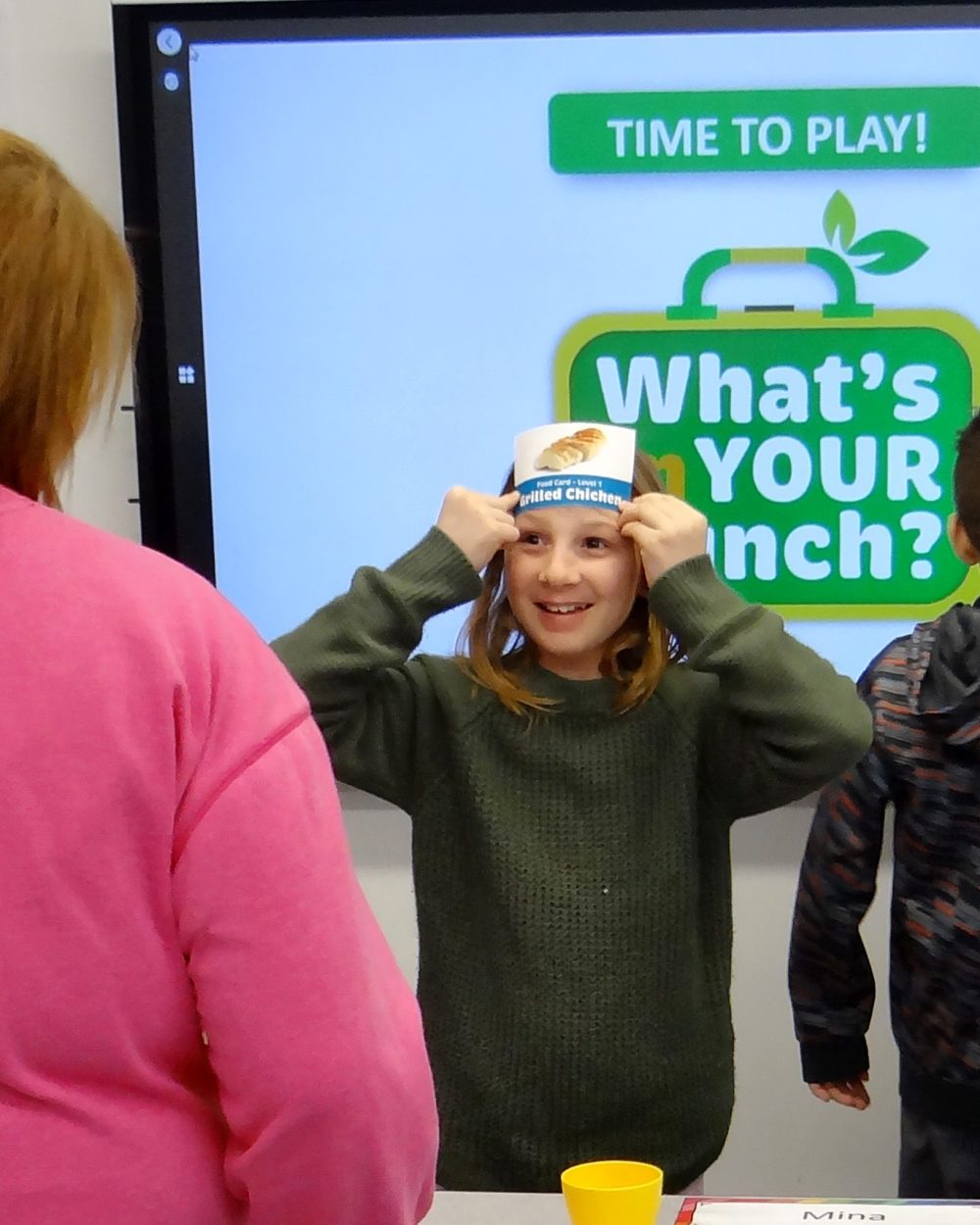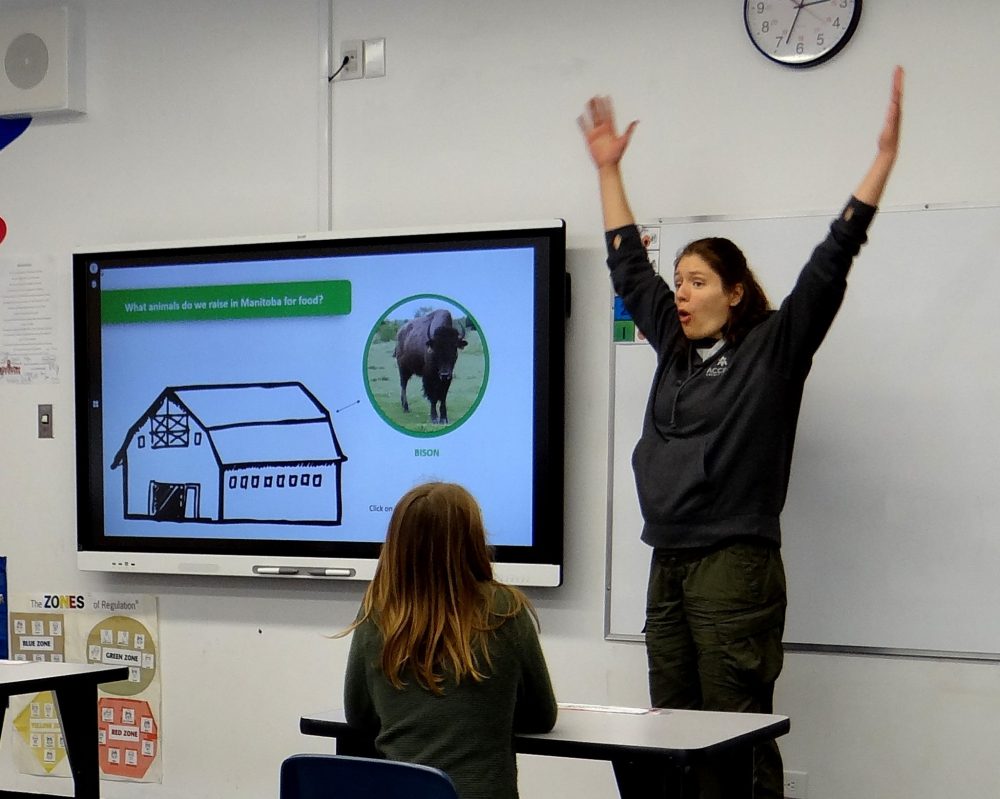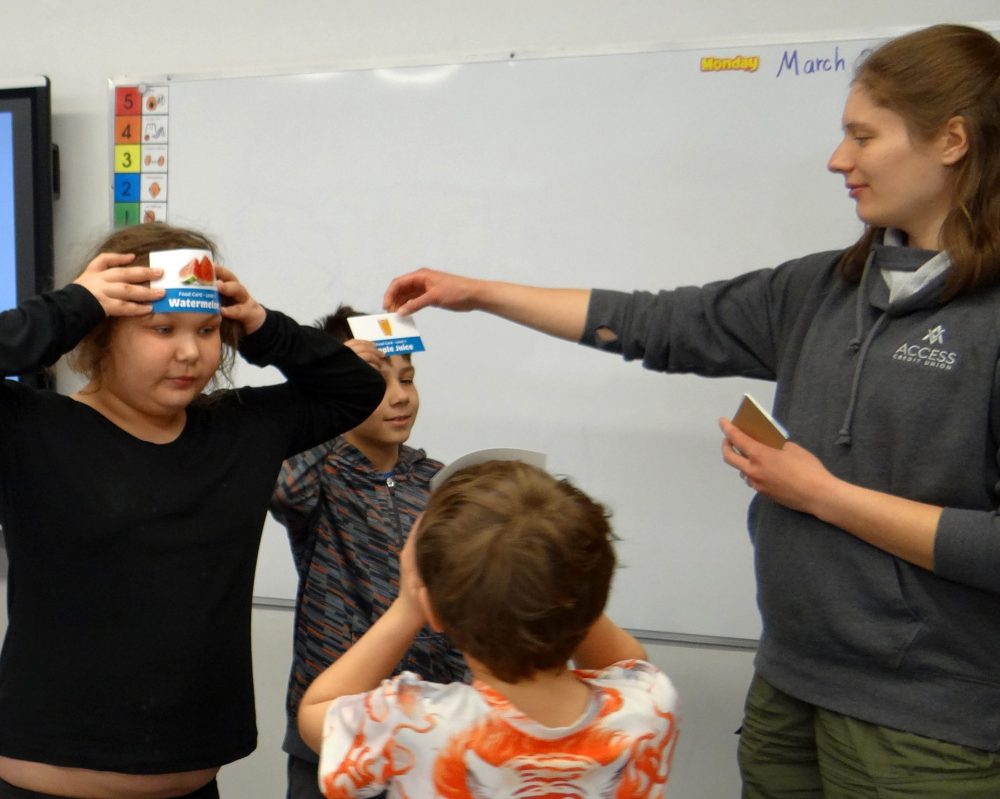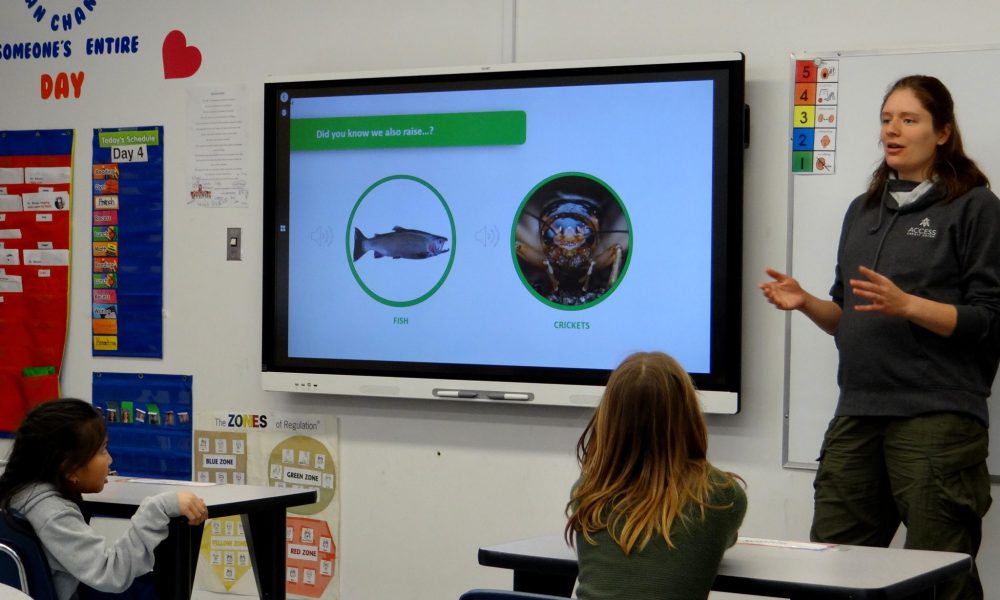Ag in the Classroom volunteer enjoys lively session at Sprague
Advertisement
When Agriculture in the Classroom volunteer Alex Wolf asked the Grade 3-4 class at Ross L. Gray School at Sprague what they had learned during her Canadian Agriculture Literacy Month presentation, the two quickest answers were that crickets were eaten like potato chips by some people and that bison are taller than cows.
But during the 30-minute power point presentation, it was mostly the class asking questions as the Seine Rat Roseau Watershed technician covered both familiar and unfamiliar ground for these rural Manitoba students.
Wolf told the students about crops grown in Manitoba and the different types of animals raised for meat and fibre.

Unlike some of their city cousins, all these students know that milk and eggs come from cows and chickens, not the supermarket. They were, however, somewhat puzzled when the subject of fertilized and unfertilized eggs came up, wondering why there were no roosters in egg-laying barns.
Slides showing crops grown in Manitoba included only a few the kids didn’t recognize as the pictures went up on the big screen in the Grade 3-4 classroom. They shouted out, wheat, canola and flax and also recognized all the familiar vegetables grown in their gardens at home. They may not have known what oats looked like, but they all knew it was used to make the cereal they ate for breakfast.
Other crops grown in Manitoba include corn, sunflowers, wild rice and hemp. Students learned that canola was a ‘made in Manitoba’ crop, developed in the province in the 1970’s. They also were told that Manitoba is home to the largest pea processing plant in the world.
Animals on farms in Manitoba include turkeys, chickens, sheep, goats, dairy and beef cattle, bison, and even fish. Not all fish Manitobans eat come from the province’s rivers and lakes. Trout and arctic char are grown in a huge building on a Manitoba Hutterite colony, students were told.
One of the slides showed two different types of food items and students were asked if they knew what each group represented. Wolf explained one group of foods was grown and the other was processed.
The fresh foods side of the slide showed carrots, cucumbers and steak. The other side showed canola oil, pickles and cheese. This being beef country, the student probably knew the answer when he asked, “How do you grow a steak? “

The theme for this year’s Canadian Agriculture Literacy Month in March was “What’s in your Lunch”and students learned all about food; what is grown in Manitoba and what comes from elsewhere.
There are plants like peaches, oranges, bananas, cocoa beans, tea, and vanilla that cannot be grown in Manitoba. Why not, Wolf asked?
All these students knew that pineapple could not be grown here, and being used to Manitoba winters, they also knew the reason why.
“Manitoba does not have a tropical climate.”
Wolf told the students that many of the things in the pantry and most of the food in your fridge all comes from farms. It doesn’t fall from the sky, or appear from outer space, or get made by elves in a fairy tale place.
Agriculture is farming, with its giant tractors, and involves water, land and cows. Agriculture is also a science, studying the effects of fertilizer on growing plants, for example.

“Farmers in 1900 would produce enough food to feed this classroom (about a dozen) and now a farmer would produce enough to feed this whole school.”
For the Sprague school, agriculture is very much part of the curriculum and Agriculture in the Classroom has been instrumental in providing resource materials to expand the horizons for this small K-12 school of 130 students for a number of years.
Grade 3-4 teacher Melissa Goulet says they have been participating in the CALM program in March for four or five years and “Follow the Farm” videos are in the third year, starting during COVID for grades one/two and three/four classes.
The students also get a hands-on experience every five years or so, when the whole school has the opportunity to tour Moonshadow Holsteins, a large dairy operation at St Labre.
“We tour Moonshadow when there is a new crop of students in the system. They show us everything from the calf barn to the milking facilities and serve up a barbecue lunch to follow.”
The students thoroughly enjoyed the slide show and the discussion with the volunteer, and the session wrapped up with a “twenty-questions” card game. Students lined up and were given a card illustrating a type of food.

They would hold the card on their forehead, where they couldn’t see it, and trade questions with other students to try and guess the identity of the card they are holding. Although they ran out of time before they ran out of guesses, the game was part of the resource package left with the school and the students were looking forward to playing it in their classroom again.
The “What’s in Your Lunch?” kit provided by Agriculture in the Classroom gives teachers a hands-on way of connecting students to the food they eat and the farmers who produce it.
There are Manitoba curriculum connections for Grades 2-6 and suggestions of how to use the materials in the kit to best meet Manitoba learning outcomes.
